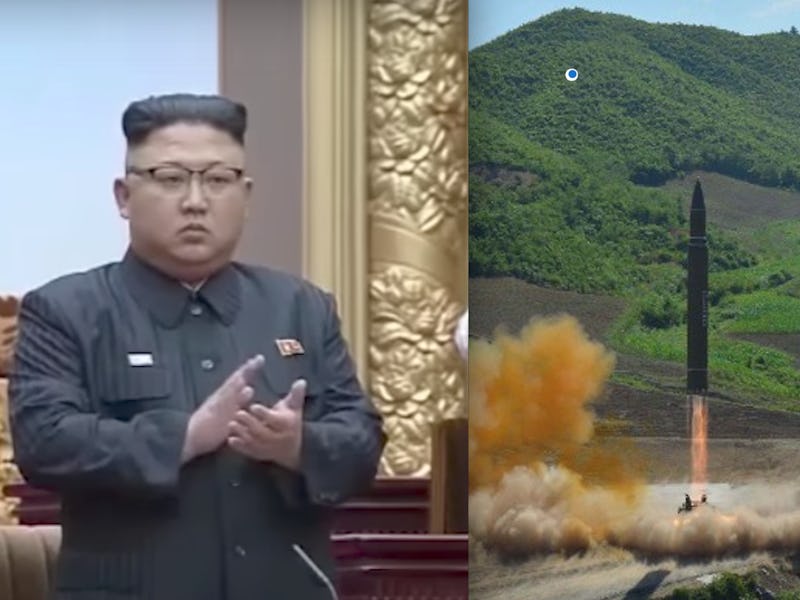A Brief History of How North Korea Celebrates the Fourth of July
The holiday wasn't always treated with antagonism.

In the early morning hours of Tuesday, July 4, North Korea tested what is thought to have been an intercontinental ballistic missile (ICBM), the first that the country has ever launched. The state-run Korean Central Television called the missile’s success “shining,” rather like North Korea’s own version of a dazzling Fourth of July firework; the regime loves to take advantage of the United States’ annual day of nationalism to assert its oppositional power.
Kim Jong-un, the current Chairman of the Workers’ Party of Korea, is only the latest of his family to launch missiles on the United States’ Independence Day. His father, Kim Jong-il, oversaw two rounds of tests on July 4, 2006 (though in Pyongyang it was the morning of July 5); his timing was especially brutal, as it coincided with NASA’s launch of the Discovery space shuttle to resupply the International Space Station. Seven missiles were used, the foremost of which — a Taepodong-2 with an estimated range of up to 2,4000 miles — failed after about 42 seconds.
Another seven were launched on July 4, 2009, less than a month after the United Nations Security Council had adopted Resolution 1874 imposing sanctions on North Korea in response to its recent nuclear test. A state-controlled newspaper called the new sanctions a “declaration of war.” The subsequent missile test featured only short-range projectiles with a range of less than 350 miles.
A photo from the state-run Korean Central News Agency that purports to show the missile launched on July 4, 2017.
It’s now eight years later, and this latest Independence Day test is the most fearsome yet. The Hwasong-14 ICBM flew about 600 miles, but had a steep vertical trajectory, probably to avoid harming neighboring territory; if it had gone a lower route, analysts estimate that it could have gone 4,000 miles, meaning that it could have reached any part of Alaska. This appears to be a new missile of North Korea’s own design, as opposed to a recasting of old Soviet models like those the country has typically used in the past.
“When they first unveiled the engine on March 18, they said that the ‘world would soon see what this means,’” Jeffrey Lewis of the James Martin Center for Nonproliferation Studies told The Washington Post. “I think we’re now seeing them take that basic engine design and execute it for an ICBM.”
But it wasn’t always like this. Back in 1972, North Korea had a Fourth of July that actually seemed to bode well for a peaceful future for the country. On that day, the country released an official statement called “The July 4 South-North Joint Communiqué,” which described recent unification talks between Pyongyang and Seoul. The document said that the leaders of the two countries “made great progress towards promoting mutual understanding.”
Alas, times have changed. Now we’re in an era in which Pyongyang takes pleasure in symbolic antagonism. We can expect more displays of power on July 4 in the future; and on September 9, too — North Korea’s day of founding and its own patriotic holiday — when the country also enjoys testing out dangerous technology.